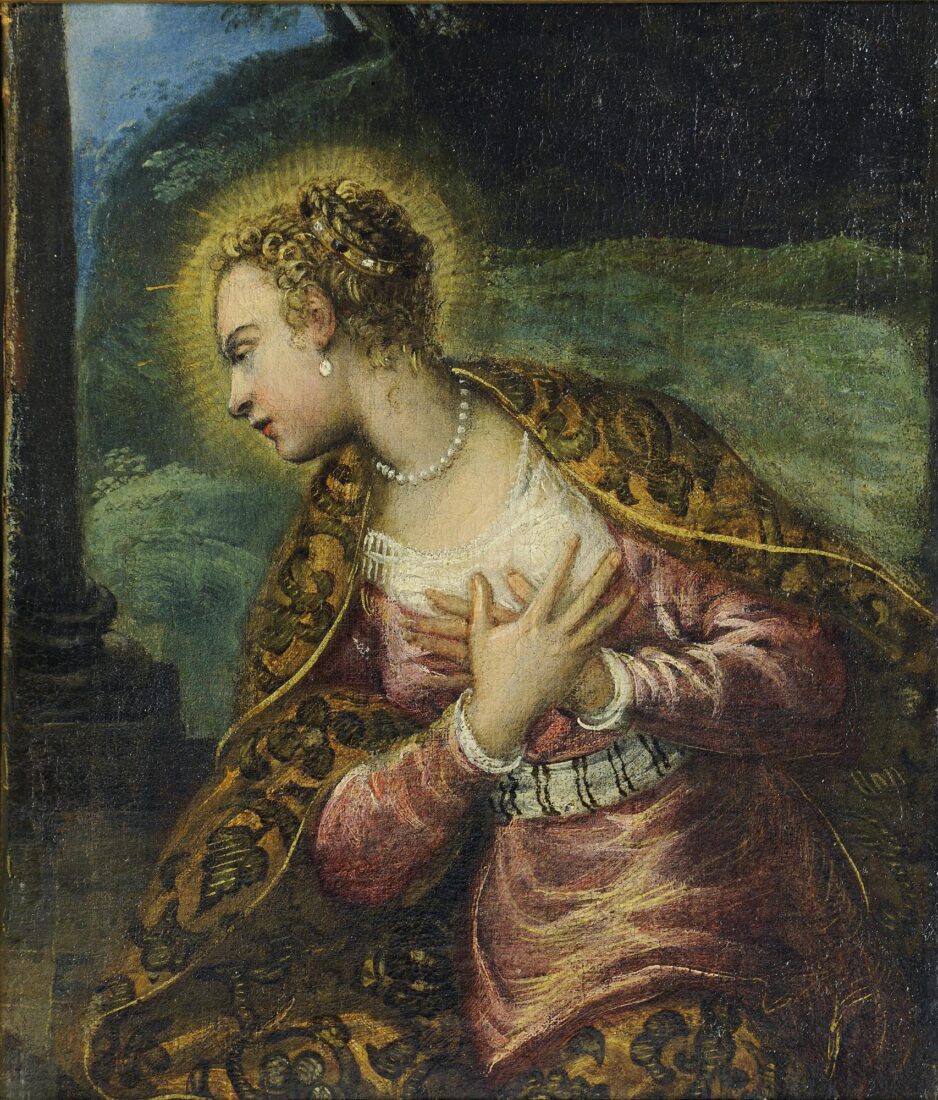We use cookies to make our site work properly, to personalize content and ads, to provide social media features and to analyze our traffic. We also share information about how you use our site with our social media, advertising and analytics partners. Read the Cookies Policy.

Saint Margaret, ca. 1550
Oil on canvas, 36,2 x 29,5 cm
This work was purchased by the National Gallery in 1996, after it was presented at the exhibition “El Greco in Italy and Italian Art”. Despite the fact that the original attribution given in the exhibition catalogue was to Jacopo Tintoretto, it subsequently came into question, and the curator of the Western European collection at the time, Angela Tamvaki, decided, after considerable research, that the work should be attributed to his workshop; the work itself was still purchased, because of its quality. Furthermore, it is well-known that Tintoretto, trying to deal with the multitude of commissions he received, had put together a large workshop with many assistants and fellow workers, among whom were his sons Domenico and Marco, and his daughter Marietta.
In terms of style, the work is a characteristic example of Venetian painting from the second half of the 16th century. It is a diagonal composition dominated by a figure twisting and sweeping ahead. The light falls on the face and the body brilliantly and drenches the dark ends of the hair, which is held in place by a piece of gold jewellery decorated with precious gems at the back part of the head. The ornamentation of the figure is comleted by necklace and ear-rings, both of pearl. The overcoat, decorated with leaf designs, falls in undulations, creating movement in the saint’s otherwise devout attitude. The brushstroke is quick and broad. The figure itself is depicted without details while, conversely, the moulding of the flesh is more sensual. Despite its small size, the painting is characterized by the same monumental and sculptural temperament one finds in Tintoretto’s works.
Since this is a fragment of a larger composition, it is not certain if the depicted figure should be identified with this specific saint or not. The halo on her head and her devout attitude bear witness to the fact that this not a secular but rather a religious figure, and in keeping with the fashion of that period in Venice, she is depicted as an aristocrat, wearing resplendent garments.

